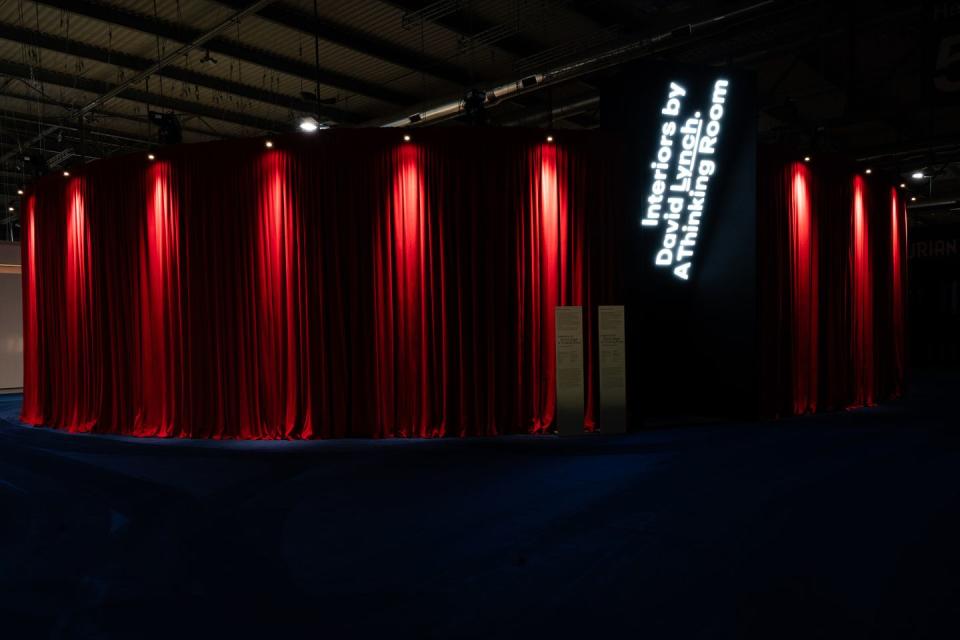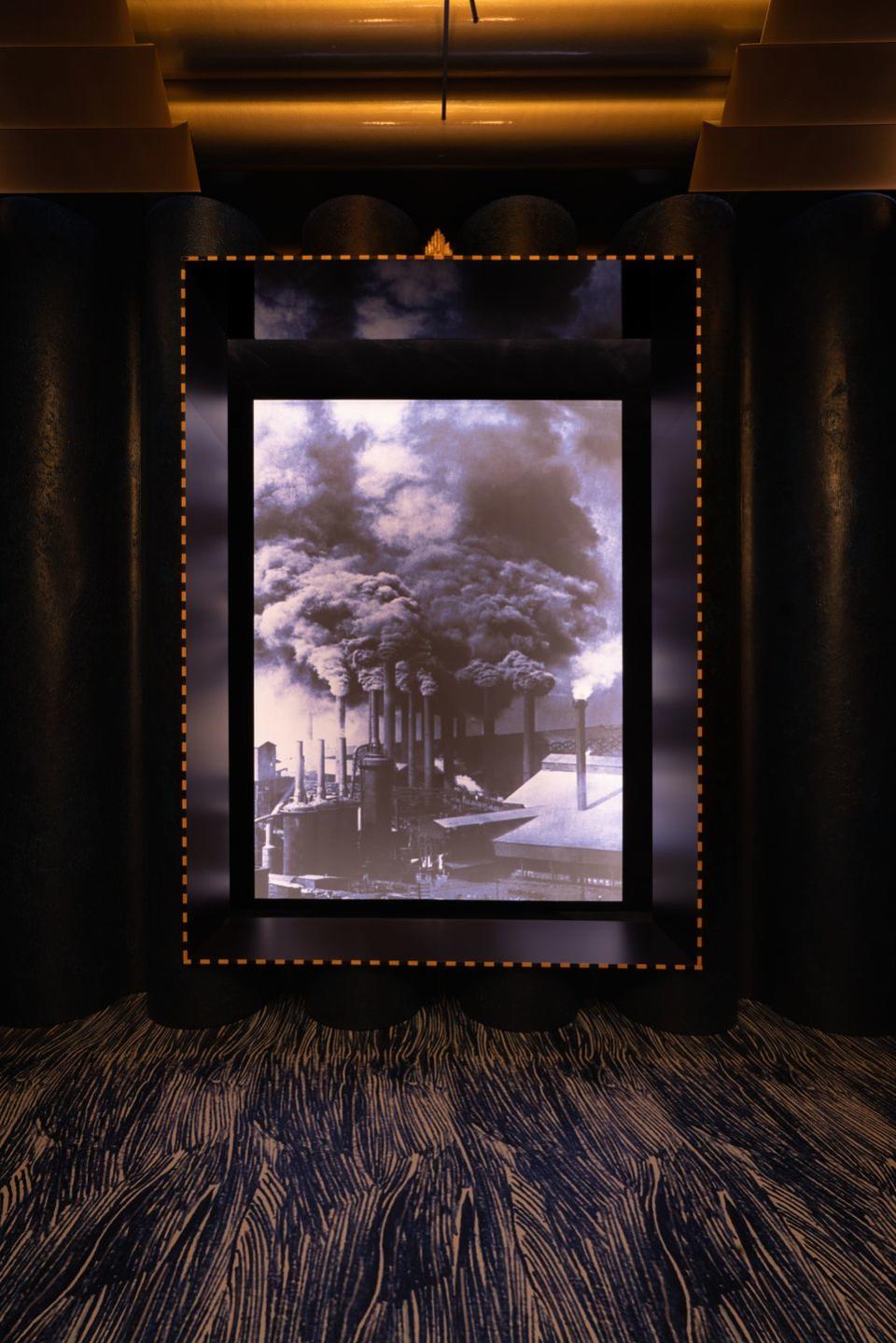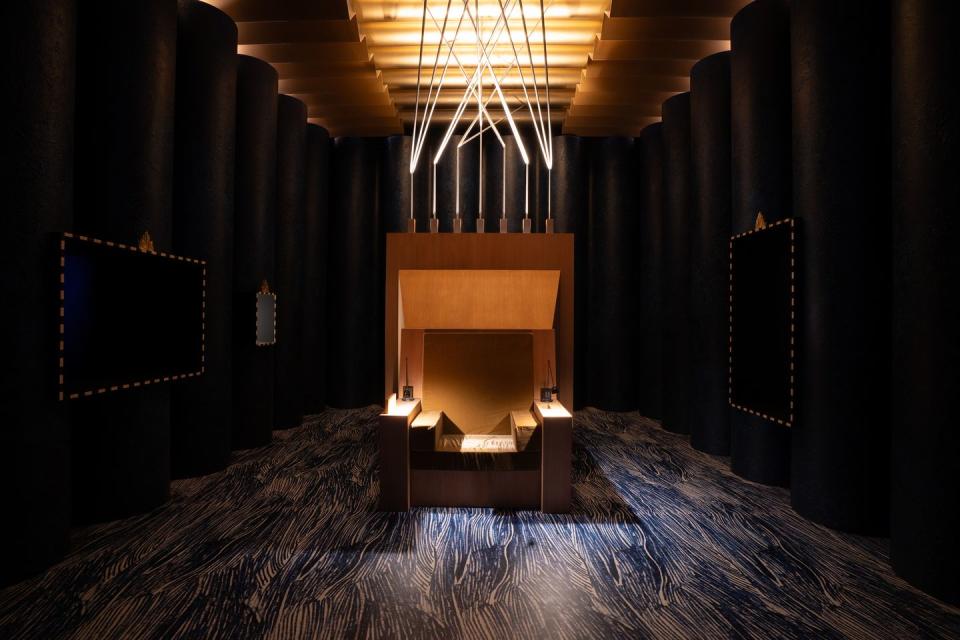David Lynch’s Installation at Milan’s Salone del Mobile Is as Surreal as His Films

- Oops!Something went wrong.Please try again later.
"Hearst Magazines and Yahoo may earn commission or revenue on some items through these links."
With its moving sidewalks and undulating glass canopy, the setting for Milan’s Salone del Mobile—the Fiera Milano Rho fairground on the city’s outskirts—has a space-age atmosphere that feels cinematic. So it’s fitting that a bona fide screen legend—director David Lynch of Blue Velvet and Twin Peaks fame—has designed the starring project at this year’s Salone. The installation “Interiors by David Lynch. A Thinking Room” debuted today at the 2024 edition of the fair—one of the world’s biggest and most influential design shows—and runs until April 21.
“It will be the event of the year,” promises Antonio Monda, the film professor and curator who persuaded Lynch to participate.
The project—which was entirely conceived by the filmmaker—consists of two identical rooms that are curtained in blue velvet and feature video projections, a large central throne, seven gilded cylinders, and “a surprise,” per Monda.
If the mirror-image setup is suitably surreal for the director of such art house classics as Eraserhead and Blue Velvet—not to mention the television series Twin Peaks and its more recent Showtime sequel Twin Peaks: The Return—the design had a practical intent. Crowds at this year’s Salone are expected to top 300,000, “so we decided to double it,” Monda says.

The idea for the project originated when the design fair’s president, Maria Porro, reached out to Monda for a collaboration with a filmmaker. The curator remembered visiting Lynch at his home in Los Angeles in his role as artistic director at the Rome Film Festival. When he arrived, he found the director in his garage. “He was literally polishing a desk,” Monda says. “He told me, ‘This is what I do. I design furniture.’”
Indeed, Lynch’s interest in design and architecture—and furniture design in particular—has a long history. The former art student is a skilled carpenter who has been designing and making his own furniture for many years, both for his own use and for the sets of his films. For his debut, Eraserhead—produced in 1977 as a student project, with a shoestring budget to match—he created much of the furniture himself at home. He continued to design and produce pieces for most of his productions and has a longtime fascination with the architect Frank Lloyd Wright—and even lives in a house designed by the architect’s son. In 2011, the filmmaker was involved in the creation of Silencio, a Paris nightclub based on the design of the spooky theater in his 2001 movie Mulholland Drive (the designer Harry Nuriev earlier this year created a Manhattan outpost of the club, based on Lynch’s original).

This is not Lynch’s debut at the Milan furniture fair; in 1997, he presented a furniture collection at the Salone del Mobile. While he won’t be traveling to Milan for the fair (“He hasn’t left his home since Covid,” Monda says), Lynch was involved in every aspect of the installation. His concept was to create a space for “thinking” or meditation. A devotee of transcendental meditation, he aimed to create a space where “people can be at peace with themselves,” Monda says. He created all the sketches for the installation, which was built by Milan architecture firm Lombardini22 and set designers from the city’s Piccolo Theater. “I know there was a lot of back and forth from L.A. to Milan and a long conversation—a philosophical conversation—of whether the lighting should come from above or from the side,” the curator says.

Despite his cinematic prowess, Lynch has said that his “Thinking Room” has no connection to his film and television oeuvre. “He’s very clear that the relationship is with his furniture and that other great element of his life, meditation,” Monda says. “As a professor and cinema buff, I see the same language, but he would not say that.”
You Might Also Like

